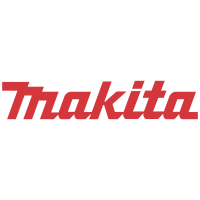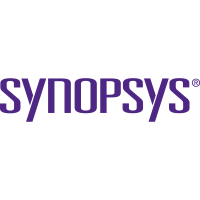
Ramelius Resources Ltd
ASX:RMS


| US |

|
Johnson & Johnson
NYSE:JNJ
|
Pharmaceuticals
|
| US |

|
Berkshire Hathaway Inc
NYSE:BRK.A
|
Financial Services
|
| US |

|
Bank of America Corp
NYSE:BAC
|
Banking
|
| US |

|
Mastercard Inc
NYSE:MA
|
Technology
|
| US |

|
UnitedHealth Group Inc
NYSE:UNH
|
Health Care
|
| US |

|
Exxon Mobil Corp
NYSE:XOM
|
Energy
|
| US |

|
Pfizer Inc
NYSE:PFE
|
Pharmaceuticals
|
| US |

|
Palantir Technologies Inc
NYSE:PLTR
|
Technology
|
| US |

|
Nike Inc
NYSE:NKE
|
Textiles, Apparel & Luxury Goods
|
| US |

|
Visa Inc
NYSE:V
|
Technology
|
| CN |

|
Alibaba Group Holding Ltd
NYSE:BABA
|
Retail
|
| US |

|
JPMorgan Chase & Co
NYSE:JPM
|
Banking
|
| US |

|
Coca-Cola Co
NYSE:KO
|
Beverages
|
| US |

|
Walmart Inc
NYSE:WMT
|
Retail
|
| US |

|
Verizon Communications Inc
NYSE:VZ
|
Telecommunication
|
| US |

|
Chevron Corp
NYSE:CVX
|
Energy
|
Utilize notes to systematically review your investment decisions. By reflecting on past outcomes, you can discern effective strategies and identify those that underperformed. This continuous feedback loop enables you to adapt and refine your approach, optimizing for future success.
Each note serves as a learning point, offering insights into your decision-making processes. Over time, you'll accumulate a personalized database of knowledge, enhancing your ability to make informed decisions quickly and effectively.
With a comprehensive record of your investment history at your fingertips, you can compare current opportunities against past experiences. This not only bolsters your confidence but also ensures that each decision is grounded in a well-documented rationale.
Do you really want to delete this note?
This action cannot be undone.

| 52 Week Range |
2.07
4.09
|
| Price Target |
|
We'll email you a reminder when the closing price reaches AUD.
Choose the stock you wish to monitor with a price alert.

|
Johnson & Johnson
NYSE:JNJ
|
US |

|
Berkshire Hathaway Inc
NYSE:BRK.A
|
US |

|
Bank of America Corp
NYSE:BAC
|
US |

|
Mastercard Inc
NYSE:MA
|
US |

|
UnitedHealth Group Inc
NYSE:UNH
|
US |

|
Exxon Mobil Corp
NYSE:XOM
|
US |

|
Pfizer Inc
NYSE:PFE
|
US |

|
Palantir Technologies Inc
NYSE:PLTR
|
US |

|
Nike Inc
NYSE:NKE
|
US |

|
Visa Inc
NYSE:V
|
US |

|
Alibaba Group Holding Ltd
NYSE:BABA
|
CN |

|
JPMorgan Chase & Co
NYSE:JPM
|
US |

|
Coca-Cola Co
NYSE:KO
|
US |

|
Walmart Inc
NYSE:WMT
|
US |

|
Verizon Communications Inc
NYSE:VZ
|
US |

|
Chevron Corp
NYSE:CVX
|
US |
This alert will be permanently deleted.
Ramelius Resources Ltd
Ramelius Resources Ltd., an Australian gold medalist in the mining sector, carves its narrative through the golden soils of Western Australia. Established in 2003, Ramelius discovered its first glittering success with the Wattle Dam Gold Mine, a project that propelled it onto investors' radar by showcasing its knack for identifying and maximizing rich gold deposits. With its headquarters in Perth, the company deftly manages a portfolio of operations centered around the Mount Magnet, Edna May, Vivien, and Marda Gold Mines. Each of these sites serves as a testament to Ramelius's commitment to sustainable growth and profitability through strategic exploration and development. The intricate dance of geology and engineering enables the company to efficiently extract gold, which it then transitions from raw ore to refined gold bars, eventually sold to meet burgeoning demand in the global markets.
Integral to Ramelius's financial narrative is its adeptness in project acquisition and expansion, a strategic choice that not only bolsters its resource base but also fortifies its production capacity. By integrating new assets and enhancing existing operations, the company has consistently driven down production costs while simultaneously increasing output. Alongside this operational efficiency, Ramelius places a clear emphasis on maintaining robust financial health, managing risks prudently, and constantly innovating within its technical operations. The end result is a resilient revenue stream, primarily derived from the sale of gold, that repositions the company for sustained growth in the volatile commodity markets, solidifying its place as a formidable player in the mining industry.

Ramelius Resources Ltd., an Australian gold medalist in the mining sector, carves its narrative through the golden soils of Western Australia. Established in 2003, Ramelius discovered its first glittering success with the Wattle Dam Gold Mine, a project that propelled it onto investors' radar by showcasing its knack for identifying and maximizing rich gold deposits. With its headquarters in Perth, the company deftly manages a portfolio of operations centered around the Mount Magnet, Edna May, Vivien, and Marda Gold Mines. Each of these sites serves as a testament to Ramelius's commitment to sustainable growth and profitability through strategic exploration and development. The intricate dance of geology and engineering enables the company to efficiently extract gold, which it then transitions from raw ore to refined gold bars, eventually sold to meet burgeoning demand in the global markets.
Integral to Ramelius's financial narrative is its adeptness in project acquisition and expansion, a strategic choice that not only bolsters its resource base but also fortifies its production capacity. By integrating new assets and enhancing existing operations, the company has consistently driven down production costs while simultaneously increasing output. Alongside this operational efficiency, Ramelius places a clear emphasis on maintaining robust financial health, managing risks prudently, and constantly innovating within its technical operations. The end result is a resilient revenue stream, primarily derived from the sale of gold, that repositions the company for sustained growth in the volatile commodity markets, solidifying its place as a formidable player in the mining industry.
Production: Ramelius produced 55,013 ounces of gold in the quarter, in line with expectations, despite lower grades and a transition at several sites.
Costs: All-in sustaining cost was $1,836 per ounce, slightly higher due to lower grades and some cost inflation, but within the targeted range.
Cash Flow: Strong free cash flow of $129 million was generated, with the cash and gold balance rising to $827.7 million after the Spartan acquisition and costs.
Strategic Moves: The acquisition of Spartan Resources was completed, and integration is progressing well, with new board members and team members from Spartan joining.
Exploration: Exploration and resource definition spending increased, with significant drilling results at Dalgaranga, Mt Magnet, and Rebecca-Roe, and a boosted FY26 exploration budget of $80–100 million.
Guidance and Outlook: FY26 guidance and a 5-year outlook will be released the next day, including processing, integration studies, and detailed growth plans.
Dividends/Buybacks: Capital return strategy is under review, with more clarity expected in the first half of next year as the company considers both dividends and buybacks.
Edna May Asset: The company is fielding interest for Edna May and expects to focus on realizing value from this asset in the first half of next year.

































